The turbocharged era is officially back, and Dodge is finally embracing it with all the confidence of a brand that once dominated boosted performance in America. People often forget that Dodge wasn’t always about big, naturally aspirated HEMI® V8s. There was a time when Dodge owned the turbo game — Omni GLHS, Shelby Charger, Daytona IROC R/T, Spirit R/T, Stealth R/T Twin Turbo, Neon SRT-4, and Caliber SRT-4. The list is long, and the legacy is real.
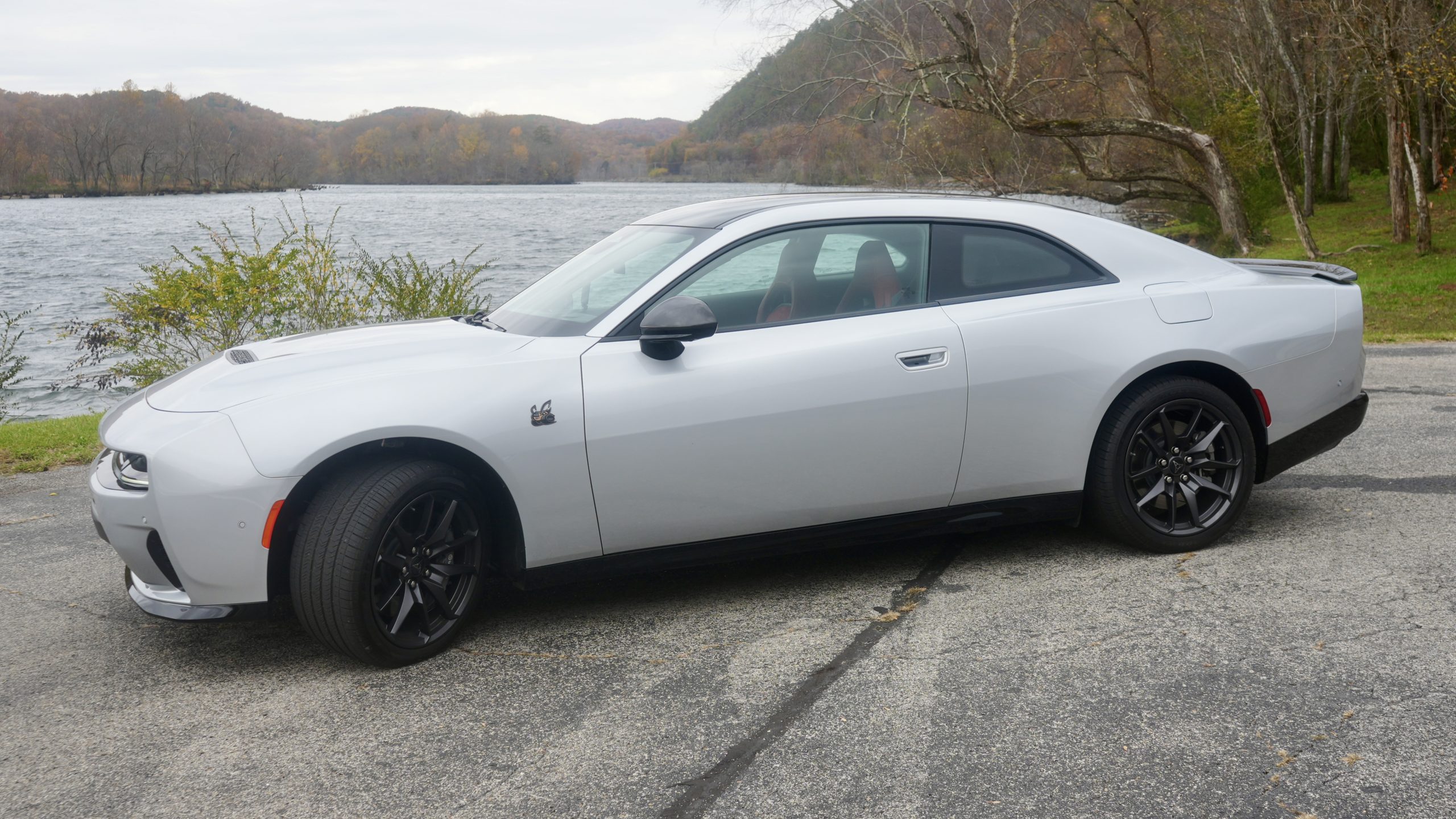
So while some people love to bash the new eighth-generation Dodge Charger for ditching the V8, history says otherwise: Dodge has done turbos before, and they’ve done them extremely well. And with the new 550-horsepower twin-turbo HURRICANE under the hood of the SIXPACK Scat Pack, Dodge isn’t just revisiting its past — it’s reimagining it.
Earlier this week, Dodge invited me to Knoxville, Tennessee, to get behind the wheel of the all-new 2026 Dodge Charger SIXPACK Scat Pack two-door — the first internal-combustion variant of the new generation. As someone who daily drives a 2025 Dodge Charger Daytona Scat Pack EV, I assumed I had a good idea of how this car would feel.
I couldn’t have been more wrong.
A Tale of Two Chargers –

I’ll be upfront: I love my Daytona Scat Pack. Despite a rough launch, the car has been getting better month after month thanks to continuous updates. It accelerates hard, handles well, is shockingly comfortable, and feels like a modern evolution of the outgoing Challenger (LA) and Charger (LD) cars. It retains that familiar big-car attitude but wraps it in a modern EV package that still feels like a proper Dodge. The way it puts down power, the stability on the highway, the comfort on long drives — all of it reminds me of the best traits of the V8 cars, just executed in an EV package.
But the new SIXPACK? It’s something completely different.
While the Charger Daytona EV feels like a futuristic extension of the old V8 cars, the SIXPACK feels like Dodge started with a clean-sheet performance philosophy. It doesn’t try to mimic the old cars; it tries to outclass them. It’s sharper, more aggressive, more responsive, and more rewarding — especially when the road gets tight, technical, and unforgiving. It doesn’t have that “big American cruiser” feel. It behaves more like a modern performance coupe engineered to take advantage of every bit of chassis stiffness, suspension travel, and AWD capability available.
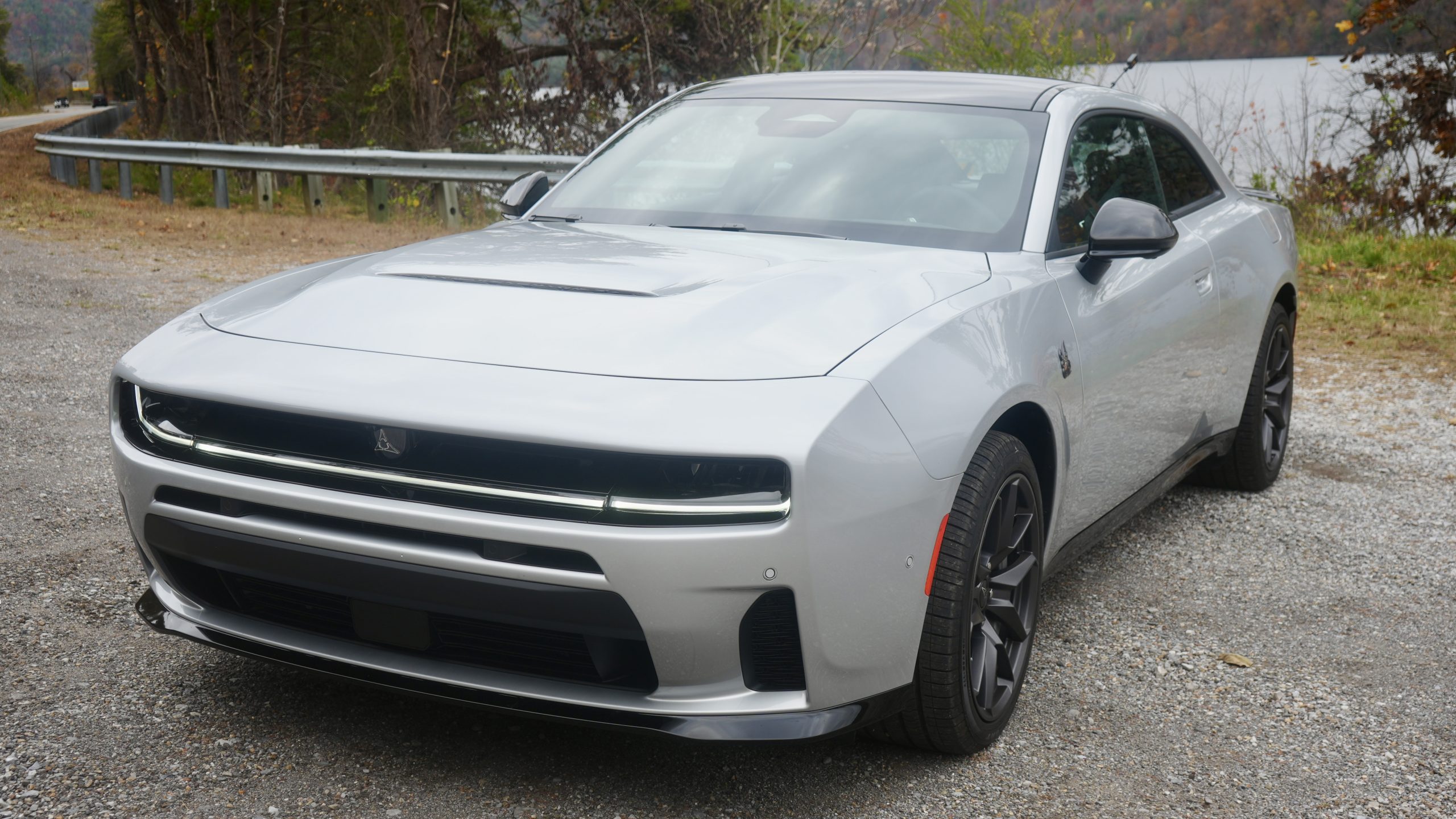
From the outside, the SIXPACK and Daytona look almost identical except for the fascia, hood, rear valance, badging, shifter differences, and the obvious distinction between a charging port on the Daytona and a fuel filler on the SIXPACK. Dodge clearly wanted the two cars to live in the same design family — and they do. Park them side by side, and unless you know what to look for, you might not catch the differences at first glance.
Inside, the cabins are practically twins, which is actually a big win for the SIXPACK. The eighth-generation Charger interior is a huge step up from the old cars. It’s more modern, more tech-focused, and far more ergonomic. The low cowl improves visibility dramatically. The seating position is more natural. The screens feel integrated rather than tacked on. And the whole cabin feels like Dodge finally prioritized the person behind the wheel rather than just the styling.
But the real magic happens when you start driving, because the similarities stop the moment the wheels start turning. The Daytona is smooth, planted, and brutally linear in how it delivers torque — it feels like the best evolution of the old V8 cars. The SIXPACK, on the other hand, hits you with a completely different personality. It comes alive. It feels lighter on its feet despite the weight. The steering has more bite. The chassis communicates more. The suspension responds quicker. You feel a connection to the road that the Daytona — strong as it is — can’t match.
The Daytona is the better boulevard cruiser.
The SIXPACK is the better backroad weapon.
And experiencing both firsthand really drives home how different these two new Chargers truly are.
Interior Impressions: Modern, Comfortable, But Not Perfect –
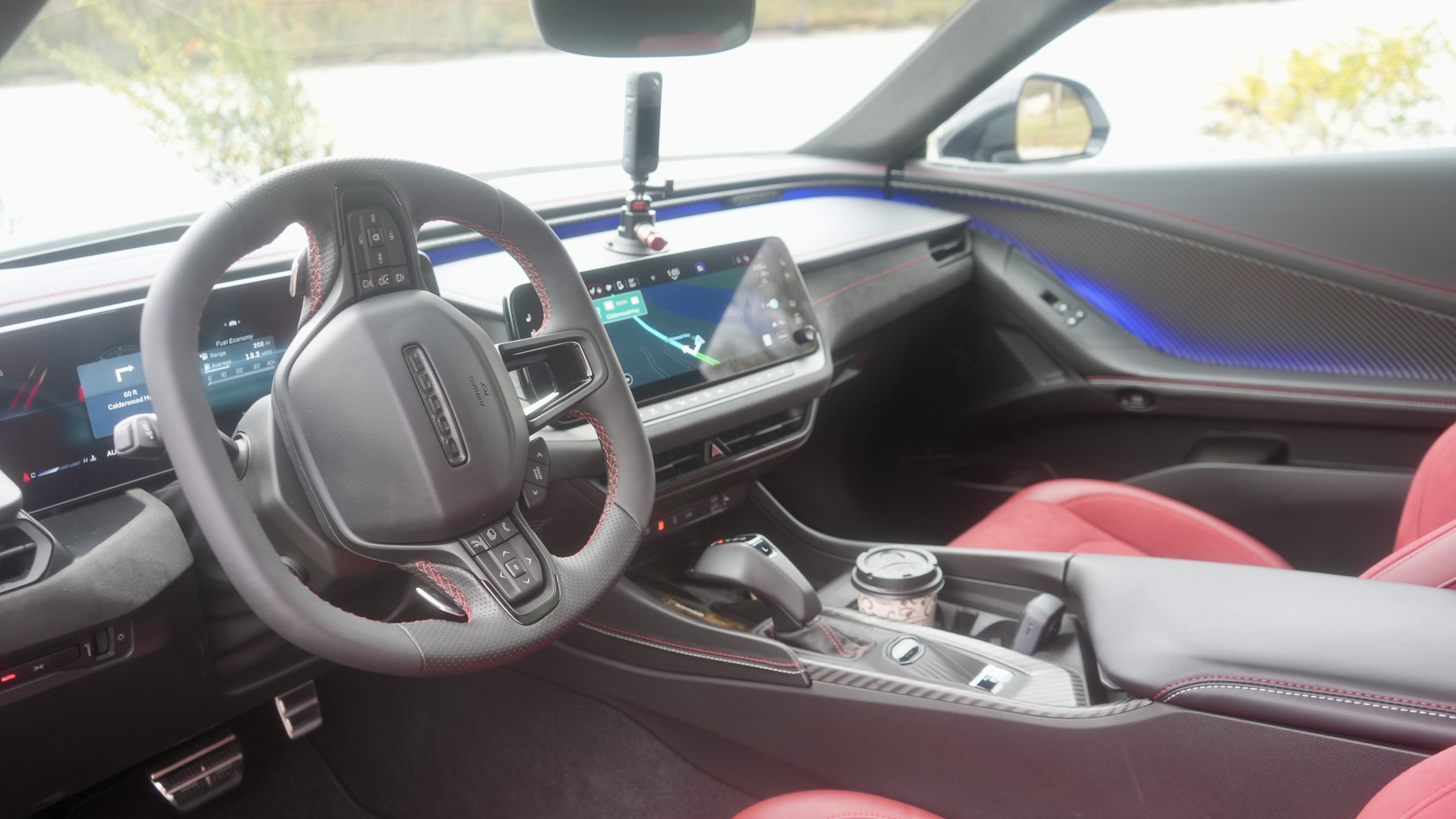
Stepping inside the eighth-generation Charger feels like walking into a completely different era for Dodge. The cabin is far more modern than anything from the old L-series cars, with a driver-focused layout, a cleaner dashboard design, wide digital real estate, and significantly better outward visibility. Dodge fixed one of the biggest complaints of the old cars — the “tunnel-like” feel — and replaced it with a cockpit that feels open, airy, and more premium in its overall layout.
The high-back sport seats deserve special praise. Dodge still makes the best seats in the segment, period. They strike the perfect balance between support and comfort, with just enough bolstering to keep you in place on twisty roads without making long trips uncomfortable. As someone who regularly drives long distances, these seats make a big difference. Even rear passengers have it good — and that’s saying something for a two-door muscle car. My teenagers can sit comfortably behind me, even with the front seats all the way back, something nearly impossible in a Mustang.
The hatch design is another home run. Dodge took some heat for making the Charger a hatchback, but honestly, this should’ve happened years ago. Cargo access is better, everyday practicality is way better, and it gives the car a level of versatility the old trunk design never could. It also smartly ties back to the heritage of the nameplate — the fastback-style 1966–1967 Chargers and even the hatchback Charger models of the 1980s — without sacrificing anything modern buyers expect today.
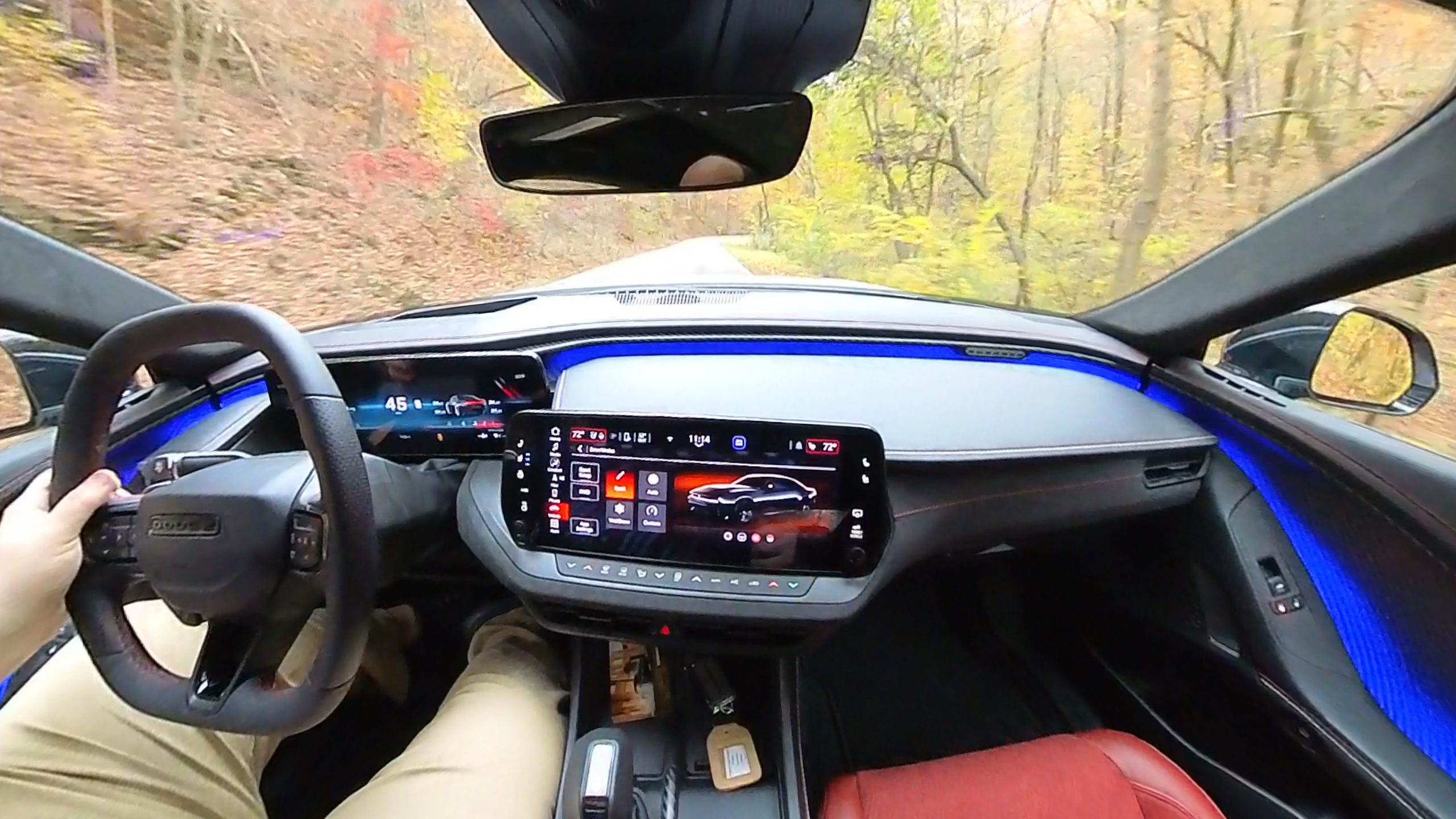
But not everything inside is a win. Dodge took risks with new materials and new interfaces, and some of those decisions miss the mark. The eco-friendly leather used on the doors, for example, feels softer but is frustratingly easy to stain. If you drive with the window down and get caught in the rain, you’ll end up wiping water spots off your door panel later. It’s a small annoyance, but an annoyance nonetheless. The plastics along the lower door and kick area are another weak point. They scuff far more easily than the harder, more durable plastics used in the old L-series cars. Getting in and out — especially in tight parking spaces where your foot might brush the door — leaves noticeable marks.
Then there’s the haptic HVAC controls. Dodge has always been known for physical knobs and buttons — the kind you can operate by muscle memory alone. These new haptic sliders feel cheap, clunky, and not very responsive. In a car that otherwise feels thoughtfully engineered, these controls stand out as the most out-of-place component in the entire cabin. A mid-cycle refresh needs to address this.
Finally, the HURRICANE’s direct-injection (DI) ticking at low speeds is noticeable in the cabin. It’s not overwhelming, but it’s there. Drivers familiar with modern DI engines won’t think twice about it, but Charger owners stepping out of a HEMI might find it distracting until they get used to it.
Overall, the interior of the new Charger feels more modern, more practical, and more comfortable than ever. But it’s not perfect — and Dodge still has room to improve the materials and tactile elements in future updates.
Tail of the Dragon: The Ultimate Proving Ground –

Nothing exposes a car’s strengths — and weaknesses — quite like the Tail of the Dragon. Anyone who has driven it will tell you: this is not a road you take lightly. It’s a test of discipline, timing, chassis balance, brakes, and confidence. Located where the Great Smoky Mountains meet the Cherokee National Forest, US 129 packs 318 curves into 11 unforgiving miles. No intersections. No stop signs. No room for sloppiness. It’s just you, the pavement, and constant elevation changes that force you to stay locked in from the minute you enter.
Dodge couldn’t have picked a better venue to showcase what the 2026 Charger SIXPACK Scat Pack was built for.
Highway to the Dragon –
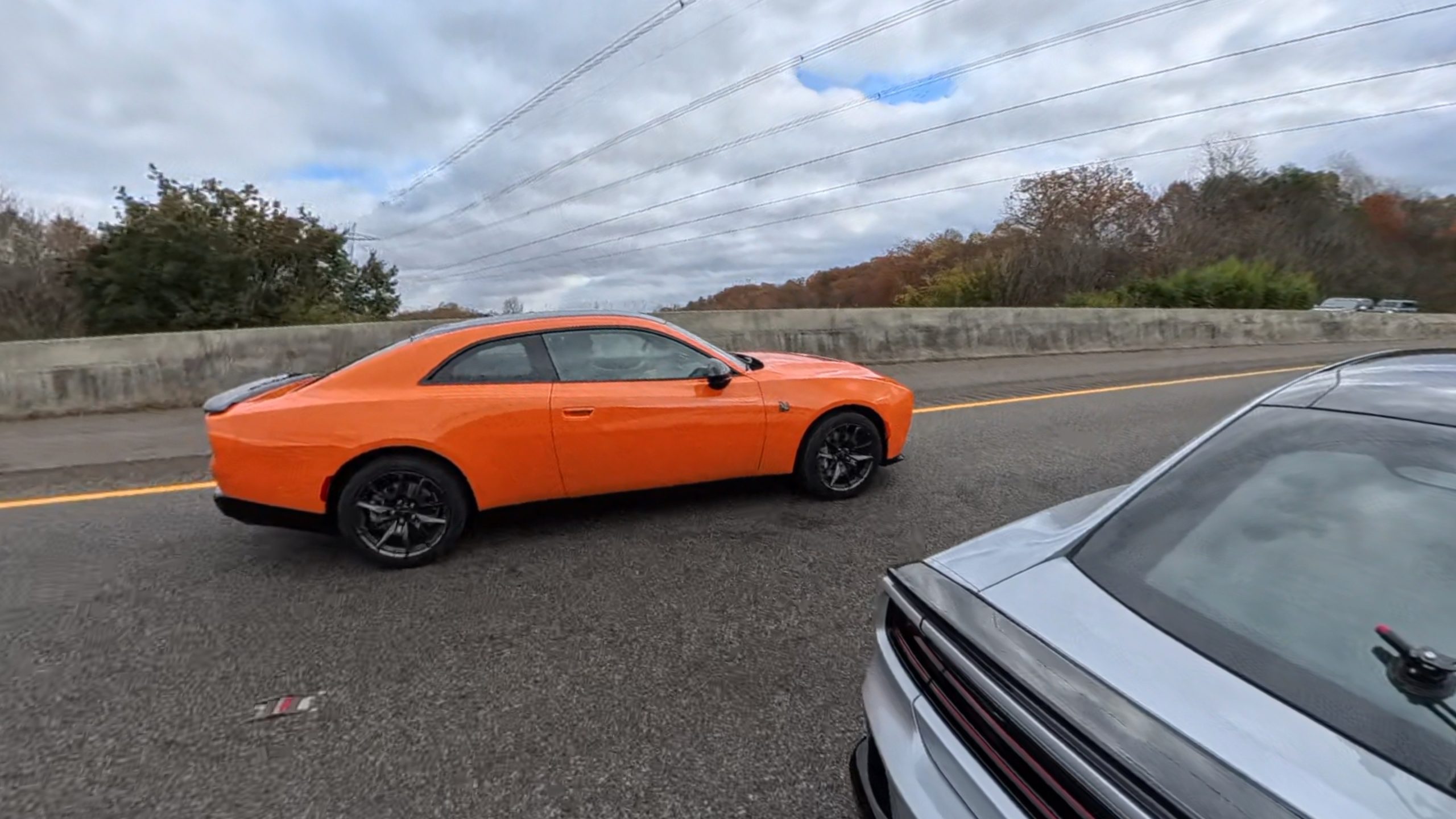
The drive from Knoxville starts off tame. In AUTO mode, the SIXPACK behaves very similarly to my Daytona — quiet, composed, and surprisingly refined. The HURRICANE’s direct-injection ticking is there at low speeds, but once you’re cruising, it fades into the background. The suspension soaks up highway ripples better than expected for something wearing 305-wide tires on 20-inch wheels. The cabin is calm, the seats are comfortable, and the car doesn’t punish you for treating it like a normal daily driver. It has that effortless highway behavior Dodge nailed on the outgoing cars, but with a cleaner, more modern feel.
Entering the First Curves –
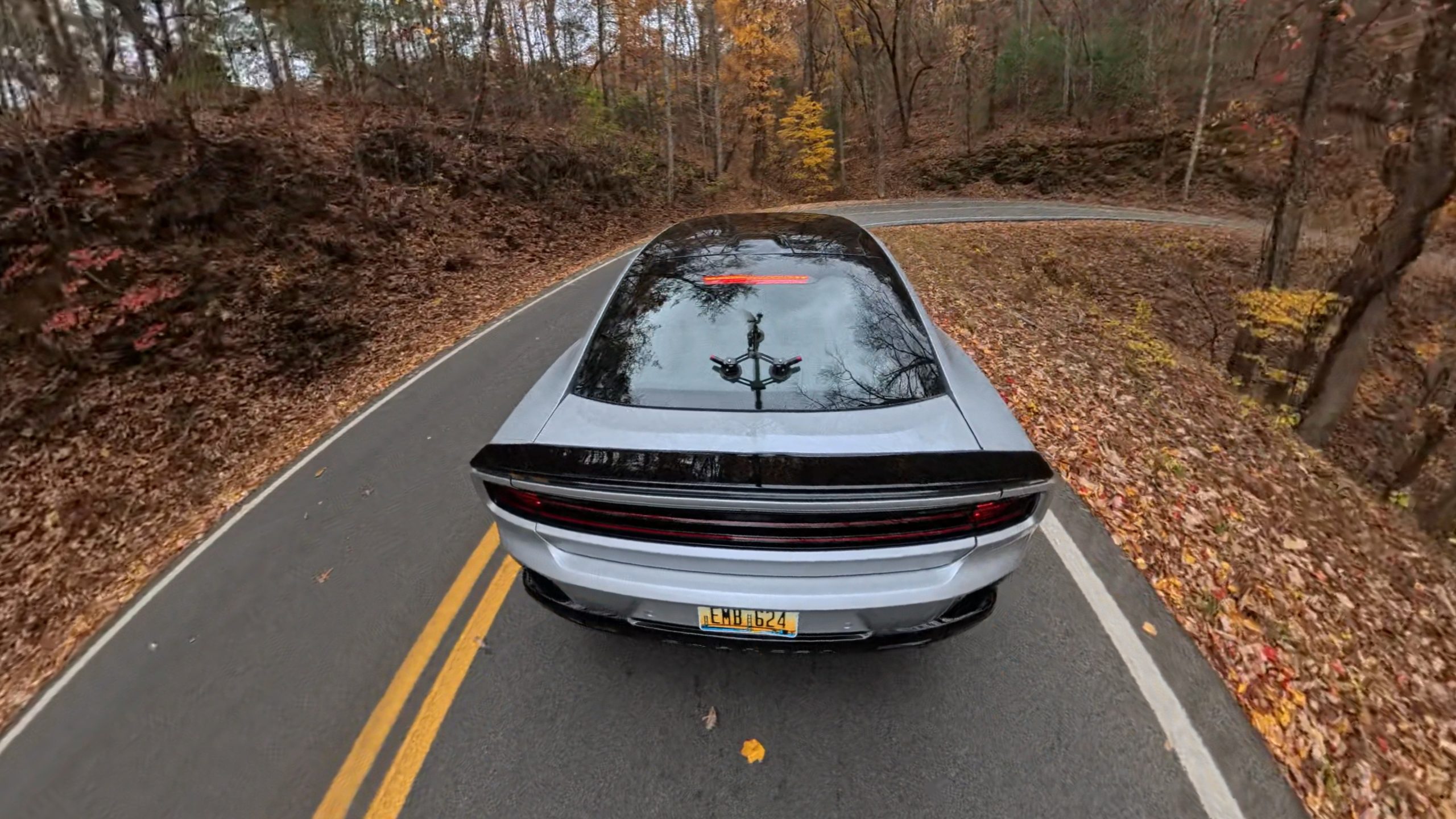
As soon as the road turns aggressive, the Charger transforms. The first thing that hits you is how little it feels like a 4,816-pound car. The weight melts away the moment you dive into the first handful of turns. You point it where you want to go, and the front end digs in with unexpected authority. Body roll is minimal. The rear stays planted. And the AWD system works in the background — no drama, no hesitation, no “oh boy” moments — just clean, predictable torque distribution.
This is easily the most balanced, most confident version of a modern Charger I’ve ever driven. The old cars always felt big, even on wide sweepers. The SIXPACK manages to hide its size so well that you almost forget you’re piloting a full-size American coupe.
Sport Mode: The Charger at Full Attack –
About halfway into my run, I decided it was time to flip the switch.
SPORT Mode instantly sharpens the entire car. The steering weight builds noticeably. The suspension tightens up. Gear changes snap harder. The throttle gets more direct. And then the exhaust valves kick open, giving the HURRICANE a voice that’s part German inline-six, part Viper V10 howl, and all Dodge attitude.
This is where the car becomes addictive.
The twin Garrett turbos spool up with incredible urgency — no real lag, just a smooth punch of torque that builds and builds. Get the car into the right gear and it rockets out of corners with a force the old 6.4-liter (392 cubic-inch) HEMI® V8 could never match at low RPM. And the blowoff noises? They’re the kind of thing you replay in your head later because they just sound that good. Dodge absolutely nailed the powertrain character under load.
And Then… It Snowed –
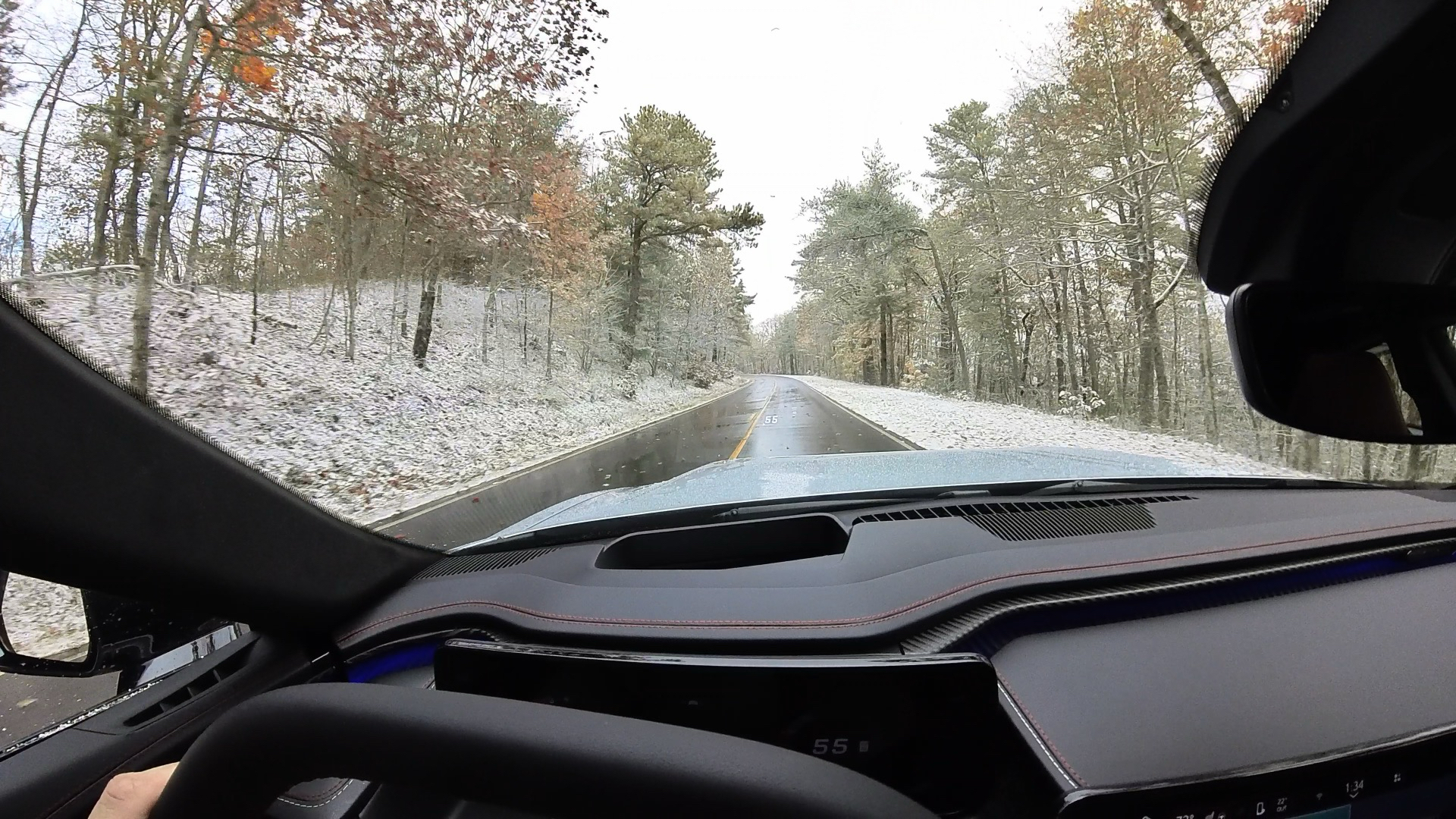
Three-quarters into my first run, I round a bend — and suddenly, I’m in a light snowstorm. Not a flurry — actual sticking, swirling snow. Only in the Smokies can you go from dry pavement to winter conditions in a single mile.
This is where the AWD became the star of the show.
Most muscle cars would instantly turn sketchy in conditions like this. But the SIXPACK, even with 305-width tires, kept its composure. The AWD system delivered grip far better than I expected. Yes, I noticed a bit of understeer here and there. And if I came in too hot, I could nudge the rear out slightly. But the system caught it every single time. The car remained controllable, confidence-inspiring, and shockingly predictable for something this powerful on summer-tire territory roads.
It didn’t just survive the snow — it excelled.
Switching to RWD: A Different Personality –

Later, when the pavement had dried and I found a safe place to pull over, I switched the car to RWD mode. It’s a little restrictive since you have to be completely stopped, and you can only activate it in SPORT Mode. Still, once everything clicks over, the SIXPACK immediately taps into the personality of the older Scat Pack models. It feels like Dodge intentionally built two characters into one car.
In RWD, the Charger becomes tail-happy in the best possible way. It’s playful and willing to rotate, but never in a way that feels like it’s trying to bite you. The rear end steps out predictably, the chassis stays communicative, and throttle modulation becomes a bigger part of the fun. It’s unmistakably Dodge — that classic “big power, rear tires first” attitude — but filtered through a much more modern, much more controlled platform.
What impressed me most was how accessible it felt. You don’t have to be an expert to enjoy it. Even less experienced performance drivers could hop in, put it in RWD, and have a genuinely good time without feeling overwhelmed or out of their depth. The car gives you room to make mistakes without punishing you for them, which is something the older cars didn’t always excel at.
In other words, AWD is the weapon — the system that lets you dominate bad weather, launch hard, and carve through tight mountain sections with all four tires clawing for grip. RWD is the reward — the mode you switch into when you want the attitude, the personality, and the old-school muscle car drama. Dodge didn’t just give the car two drivetrain setups; it gave it two distinct identities, and both work exactly as they should.
Brakes, Heat, and Hard Running –
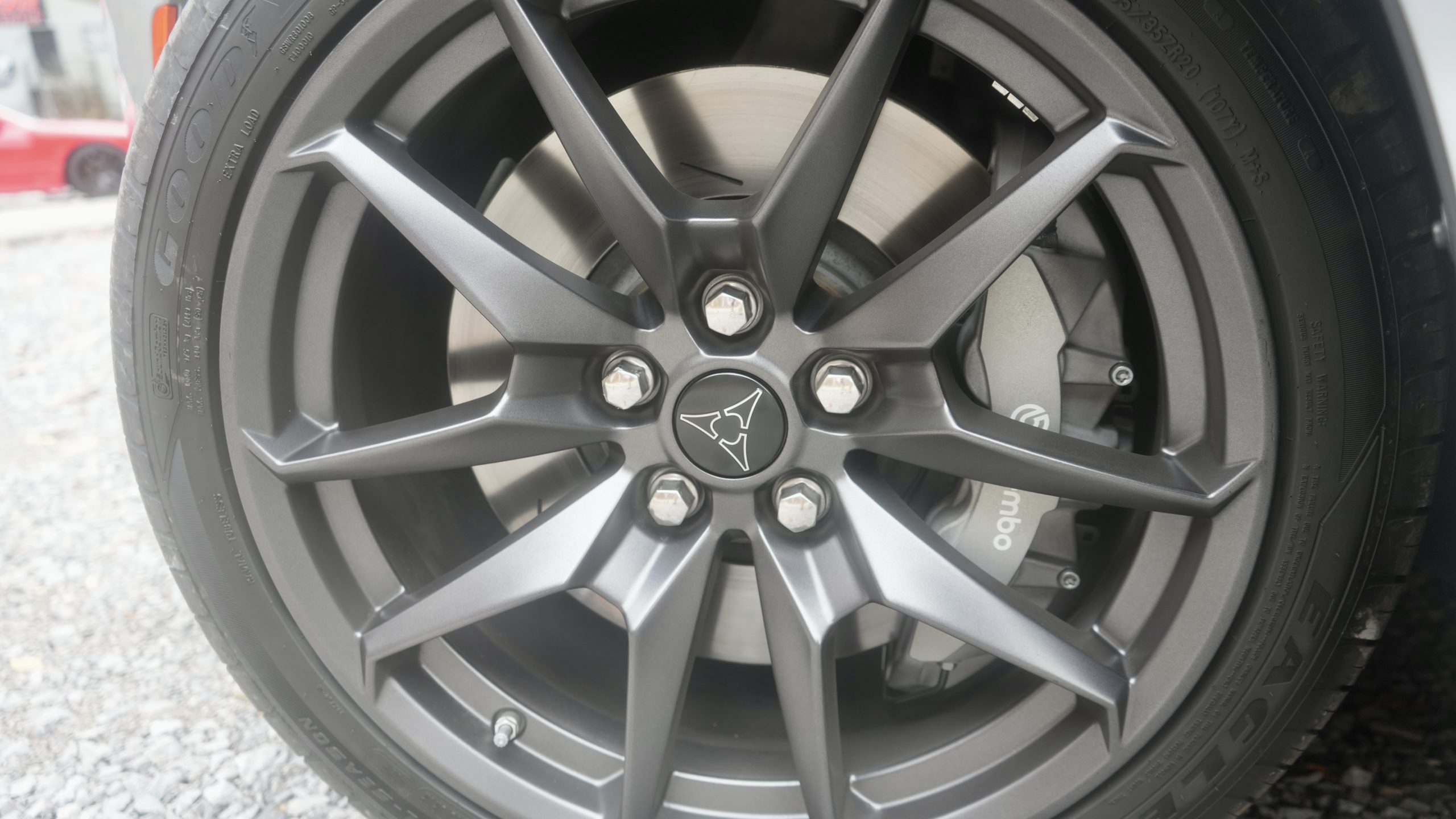
You can’t talk about the Dragon without talking about brake heat. The Brembos on this car worked hard — painfully hard at times. Near the end of my first downhill run, I could smell the pads heating up, but there was no spongy feedback from the pedal. That said, the Dragon destroys brakes on cars twice as expensive as this one. The fact that the SIXPACK hung in there as well as it did says a lot about the chassis and drivetrain’s capabilities.
On normal streets? These brakes are more than enough. It’s only when you push them to the limit — and the Dragon is absolutely the limit — that you’ll feel them start to sweat.
The Best-Handling Charger Ever Made –
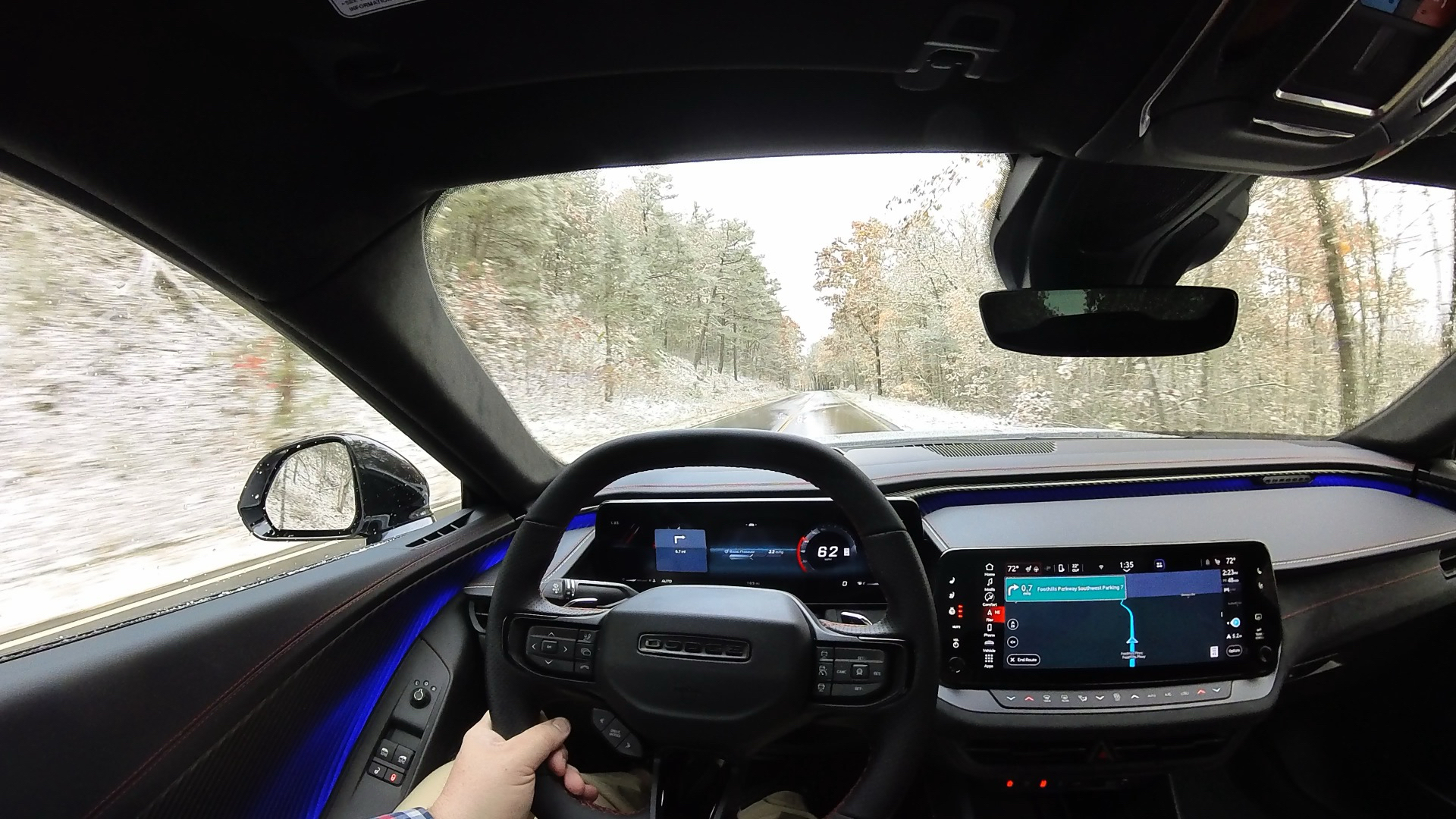
After two full passes on the Dragon — followed by time on the Foothills Parkway — in everything from dry pavement to sudden snow, and switching between AWD and RWD, one thing became undeniable: this is the best-handling Charger Dodge has ever built. Not one of the best. The best. The difference isn’t subtle. It’s no sports car, but it simply feels more composed, more predictable, and more capable than any Charger that came before it.
What stood out most was how well-balanced the car felt in situations where previous Chargers would have struggled. The steering is sharper and more direct than any modern Dodge I’ve driven, and the chassis rigidity is a night-and-day improvement over the old L-series platform. The AWD system is smarter and more performance-focused, putting power down with an immediacy and confidence that encourages you to push the car harder, even when the road gets tight and unforgiving. For the first time, the Charger genuinely feels like it was engineered with roads like the Dragon in mind.
And that’s saying something coming from someone who has owned AWD Mopars. I’ve had two 2014 Dodge Charger R/T AWD HEMI cars, and in bad weather, those cars were unstoppable. They were rock-solid daily drivers and amazing winter cars. But when you took them onto a technical curvy road, you always felt the weight and the nose-heavy layout. They were planted, but they were never eager. They did the job, but they didn’t come alive the way the new SIXPACK does.
The 2026 Charger SIXPACK Scat Pack doesn’t have that problem. It doesn’t feel like it’s disguising anything. It feels naturally athletic. The weight stays under control, the suspension remains composed, and the car rotates far more willingly than any previous Charger. Even in the snow, the AWD system handled elevation changes and mid-corner surface transitions without a hint of panic. In RWD mode, it brought back the lively, tail-happy personality of the older Scat Pack models, with more precision and less chassis slop.
The Tail of the Dragon exposes every flaw a car might have — brake fade, steering slack, poor weight balance, turbo lag, unpredictable chassis dynamics — and the SIXPACK held its ground far better than expected. It didn’t just survive the Dragon; it attacked it with the kind of confidence I’ve never associated with a full-size American performance coupe.
HURRICANE Power: Usable, Immediate, and Addictive –
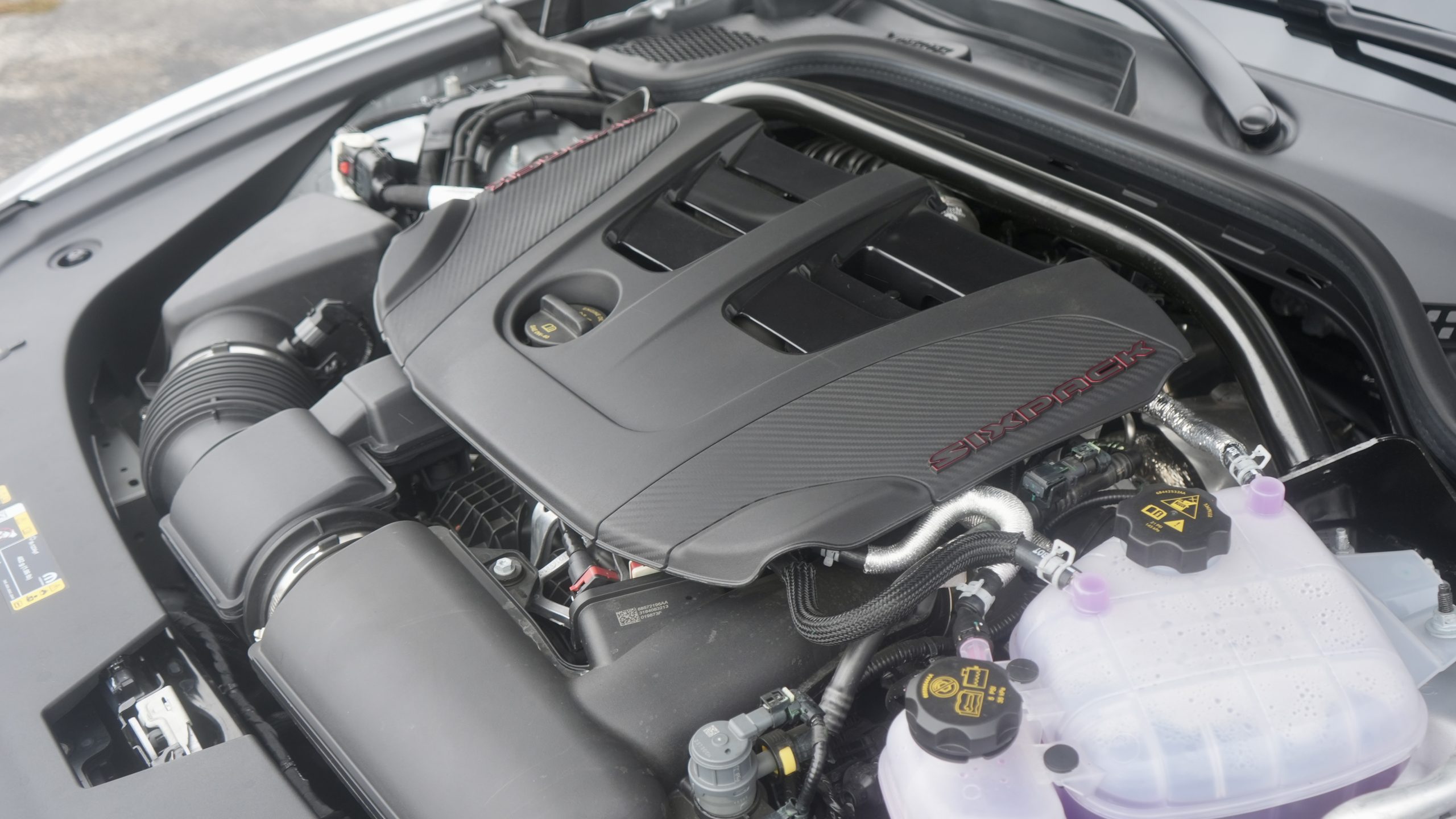
The HURRICANE H/O isn’t just strong — it’s smart. With 550 horsepower and 531 lb-ft of torque, this engine delivers power exactly where real drivers actually use it: right in the midrange. The old Gen3 HEMI V8s made their power higher in the rev band, and while they sounded incredible, they didn’t have this kind of instant, sustained shove. The HURRICANE feels like it was engineered from day one to work with the eighth-generation Charger’s chassis, AWD system, and gearing. It’s not trying to mimic the V8 era — it’s building on it.
What makes the HURRICANE so effective is the technology behind it. Dodge didn’t just slap turbos onto a six-cylinder and call it a day. They built a high-output engine using serious hardware you normally see in high-end performance cars: 30 psi of peak boost, twin low-inertia Garrett GT2054 turbos, 350-bar direct injection, plasma-coated cylinder liners, Inconel 713 turbine material, and dual water-to-air intercoolers. All of that engineering translates directly into how the car feels on the road. Boost comes on almost instantly. There’s no waiting, no hesitation, no dead spot before the power hits. You dip into the throttle, and the torque is just there.
This is something the old HEMI simply couldn’t replicate. A naturally-aspirated Gen3 HEMI under the hood of this new Charger would honestly be a disappointment. It wants a powertrain with a fat, early torque curve and the ability to pair perfectly with an advanced AWD system. A naturally aspirated V8 makes its best power higher up the rev range, and without forced induction, it would feel lazy in the low end compared to the HURRICANE. Worse, the added weight of one of the older V8s would throw off the balance and steering precision that Dodge worked so hard to achieve.
This is where the Mustang Dark Horse starts falling behind in real-world driving. Yes, the Coyote V8 sounds better and screams to the top of the tach, but the HURRICANE’s turbocharged torque curve gives the Charger an advantage everywhere except the racetrack. On the street, in the mountains, in traffic, in bad weather — the instant midrange torque simply hits harder and more consistently. It’s the kind of powerband you feel every second you’re behind the wheel.
The muscle car world may not be used to seeing Dodge lean into turbocharged performance again, but after driving this car, it’s clear: the HURRICANE isn’t a compromise. It’s an evolution. And on this platform, it’s the engine that actually makes sense.
Fuel Economy: A Legit Surprise –

My test car averaged 23 mpg during mixed driving — and that wasn’t under gentle conditions. This was real-world mileage with AWD engaged, 305-wide tires, mountain elevation changes, and plenty of throttle. What makes it even more impressive is that the car had just over 700 miles on the odometer when I got into it. Anyone who’s owned a performance vehicle knows they tend to loosen up and become more efficient after a few thousand miles. The fact that a nearly brand-new SIXPACK Scat Pack was already pulling numbers like that says a lot about the engineering behind the HURRICANE and the 880RE transmission.
Of course, fuel economy takes a hit when you push the car hard — and the Tail of the Dragon is the definition of “hard use.” According to the digital gauge cluster, I averaged 14.2 mpg during my runs on the Dragon. Honestly? For back-to-back mountain assaults, tight switchbacks, hard acceleration, heavy braking, elevation swings, and a mix of dry and snowy conditions, 14.2 mpg is completely reasonable. Most V8 muscle cars would dip deep into the single digits running the same road with the same level of intensity. The HURRICANE held its own while still delivering consistent power and never feeling strained.
To put things into perspective, a Charger engineer told me their fast-feedback SIXPACK scored 27 mpg at a steady 75 mph on the drive from Detroit to Knoxville. That’s not a fluke — that’s what happens when you combine efficient turbocharging, smart gearing, and a well-calibrated AWD system.
For comparison, my 2021 Durango R/T with the 5.7-liter HEMI managed around 22 mpg on that exact Detroit-to-Knoxville stretch. The fact that the SIXPACK can beat that, despite running wider tires, AWD, and making 550 horsepower, really shows how balanced this new powertrain is.
Ford Mustang Dark Horse vs. Dodge Charger SIXPACK Scat Pack –
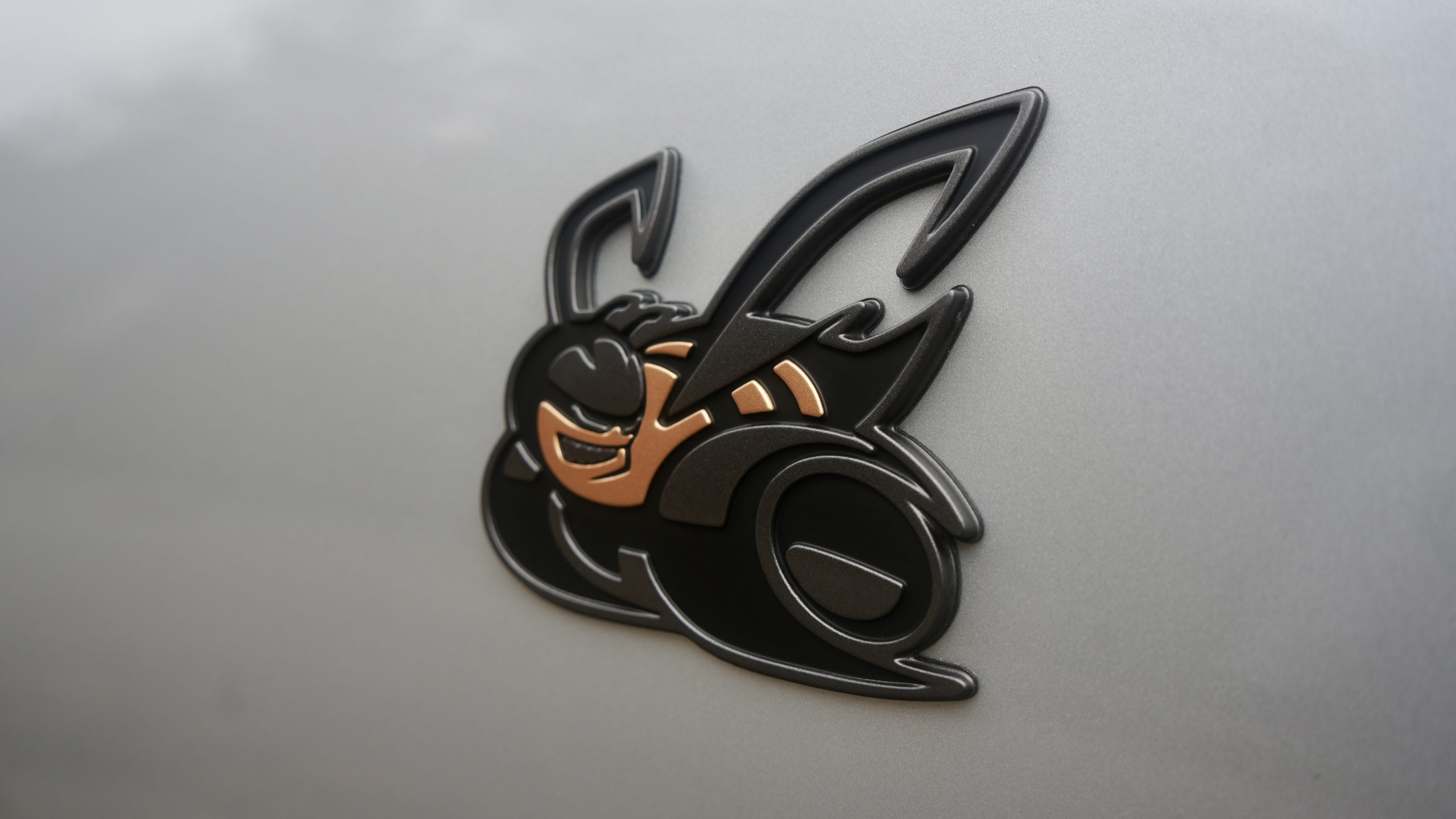
The Mustang is undeniably lighter, and that gives it certain advantages on a closed course, but the Charger brings more strength and usable power to the table. Where the Mustang relies on high revs and ideal conditions to show its best, the Charger delivers its performance in a way that works in the real world. The broader, fatter torque curve of the HURRICANE, combined with the confidence of AWD and the stability of a much more rigid platform, makes the Charger feel stronger in everyday driving and more capable when the road surface isn’t perfect.
| Category | 2026 Charger SIXPACK Scat Pack | 2026 Charger SIXPACK Scat Pack Plus | 2026 Mustang Dark Horse | 2026 Mustang Dark Horse Premium |
|---|---|---|---|---|
| Drivetrain | AWD w/ On-Demand RWD | AWD w/ On-Demand RWD | RWD | RWD |
| Engine | 3.0L Twin-Turbo HURRICANE H/O I6 | 3.0L Twin-Turbo HURRICANE H/O I6 | 5.0L Coyote V8 | 5.0L Coyote V8 |
| Horsepower | 550 hp @ 6,200 rpm | 550 hp @ 6,200 rpm | 500 hp @ 7,250 rpm | 500 hp @ 7,250 rpm |
| Torque | 531 lb-ft @ 3,500 rpm | 531 lb-ft @ 3,500 rpm | 418 lb-ft @ 4,900 rpm | 418 lb-ft @ 4,900 rpm |
| Transmission | 880RE 8-Speed Automatic | 880RE 8-Speed Automatic | Tremec 6-Speed Manual or 10-Speed Auto | Tremec 6-Speed Manual or 10-Speed Auto |
| 0–60 mph | 3.9 seconds | 3.9 seconds | 3.7 seconds (auto) / 4.1 sec (manual) | Same as standard Dark Horse |
| 1/4 Mile | 12.2 sec @ 114 mph | 12.2 sec @ 114 mph | 12.0 sec @ 118.4 mph(auto) / 12.6 sec (manual) | Same as standard Dark Horse |
| Top Speed | 177 mph | 177 mph | 166 mph | 166 mph |
| Curb Weight | 4,816 lbs | Slightly higher depending on options (glass roof, audio, etc.) | 3,879 lbs | Slightly higher due to added equipment |
| Drive Experience Focus | All-weather muscle, mountain-road capable | More luxury + performance features | Track-focused, high-revving V8 | Premium comfort + track capability |
| Interior Space | Significantly larger + usable rear seats | Same, with more premium trim | Very limited rear seat space | Same, with upgraded trim |
| Cargo / Usability | Hatchback with huge practical space | Premium interior + hatch usability | Small trunk, coupe layout | Same small trunk + premium interior |
| Starting Price | $54,995 | $60,685 | $64,080 | $69,075 |
That’s really where the separation between these two cars becomes obvious. The Mustang shines brightest on a flawless track day, where you can let the Coyote V8 wind out and take advantage of its lighter weight and sharper edge. The Charger, meanwhile, excels everywhere else — on the street, in the mountains, in bad weather, and in the kind of mixed conditions drivers actually encounter. Its power is easier to access, use, and trust.
In simple terms, the Mustang is built for perfect conditions.
The Charger is built for real conditions.
Final Verdict: The Best Modern Charger Ever Built –

After putting about 230 miles on both of the SIXPACK Scat Pack test cars combined — everything from highway cruising, to backroad exploring, to two full runs on the Tail of the Dragon — here’s my honest takeaway:
The 2026 Dodge Charger SIXPACK Scat Pack is the best-handling, most confidence-inspiring Charger Dodge has ever built. It doesn’t just improve on the outgoing cars; it feels like an entirely new chapter of what a modern American muscle car can be. The car is sharper in transitions, faster in real-world conditions, more stable at the limit, and far more versatile than anything in Dodge’s performance lineup to date. It has the refinement and composure you want on daily commutes, but still has the raw, playful attitude you expect when you put it in RWD mode and go hunting for curves.
Of course, it isn’t perfect. There are places where Dodge still has room to improve, especially in the interior. But when you look at the whole package — the capability, the traction, the usable power, the AWD versatility, the pricing, the efficiency, and the everyday livability — it becomes clear that Dodge didn’t just replace the old Charger. They reinvented what the Charger is supposed to be.
Pros:
-
Best-handling Charger ever produced
-
AWD + RWD capability makes it a true all-weather performance car
-
Instant midrange torque that hits harder than any Gen3 HEMI in real-world driving
-
Excellent highway comfort and shockingly good efficiency
-
Twin-turbo HURRICANE feels perfectly matched to the new chassis
-
Much more refined and stable at speed than previous generations
-
Raw and playful in RWD mode, still unmistakably Dodge
Cons:
-
Interior plastics need improvement — too easy to scuff
-
Haptic HVAC controls feel cheap and should be replaced with physical buttons
-
Direct-injection ticking is noticeable at low speeds
-
AWD/RWD switching should be less restrictive and not require a full stop
- The HURRICANE engine does not have a traditional dipstick for checking oil levels.
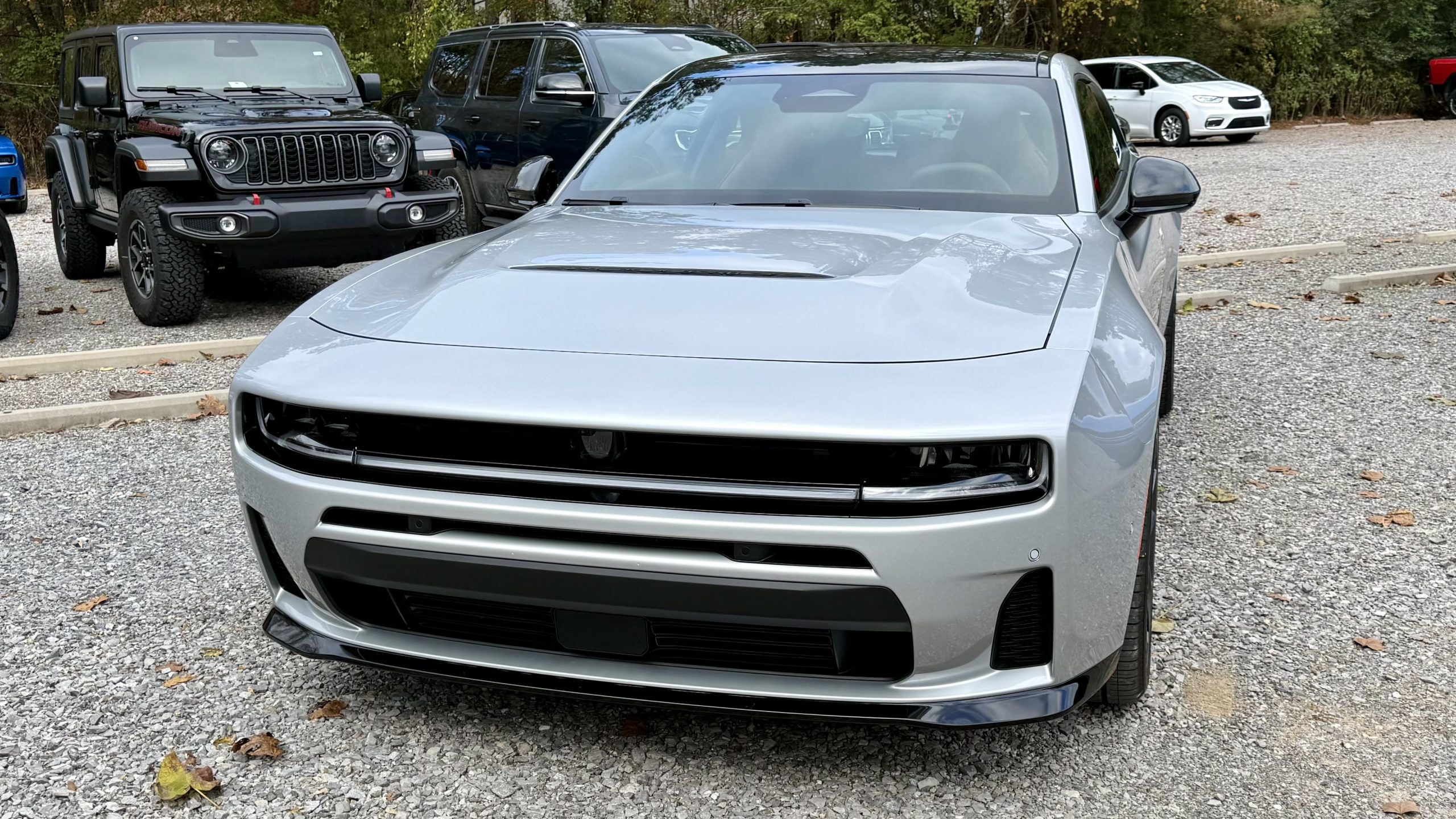
And here’s the funny part. We’ve seen this story before. Back in the 1980s, people mocked the idea of a turbocharged V6-powered Buick Grand National. They claimed it wasn’t a “real muscle car” because it didn’t have a V8 under the hood. Then it started outrunning actual V8s. Today, the Grand National is one of the most respected, most collected, and most celebrated performance cars of its era — precisely because it dared to do something different.
The Charger SIXPACK Scat Pack is walking that same path. Dodge didn’t just bring back turbocharged performance — they evolved it, refined it, and built it into a platform that’s ready for the next decade. And if this car is any indication of what’s coming? The future should be very fun.


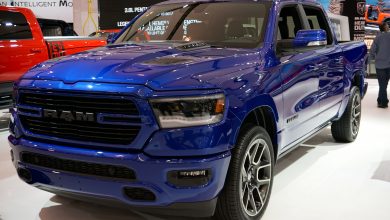
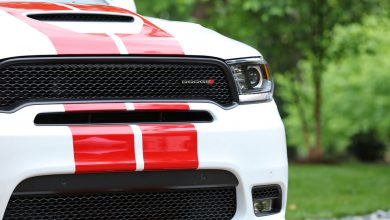
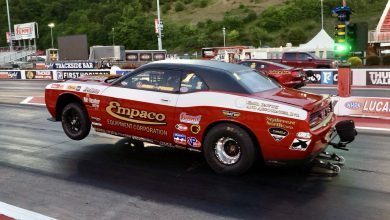
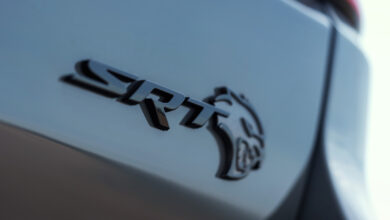
23 replies
Loading new replies...
Join the full discussion at the Mopar Insiders Forum →